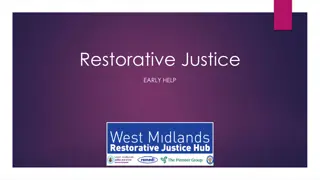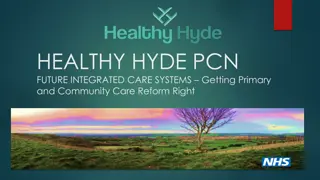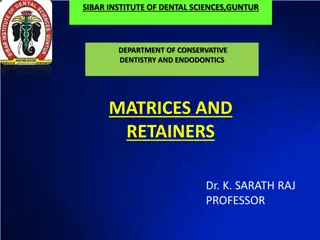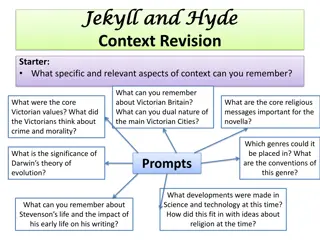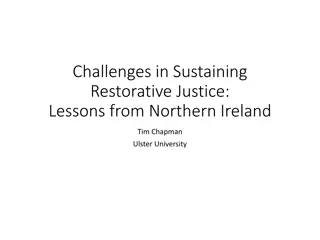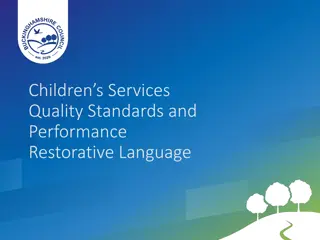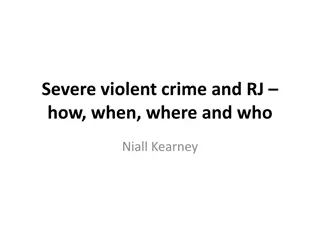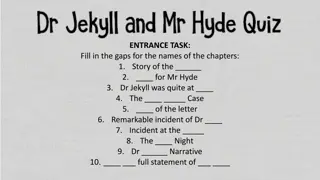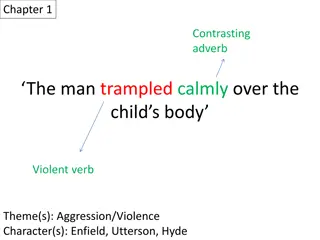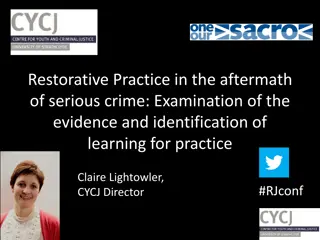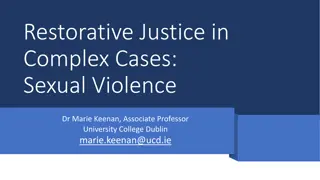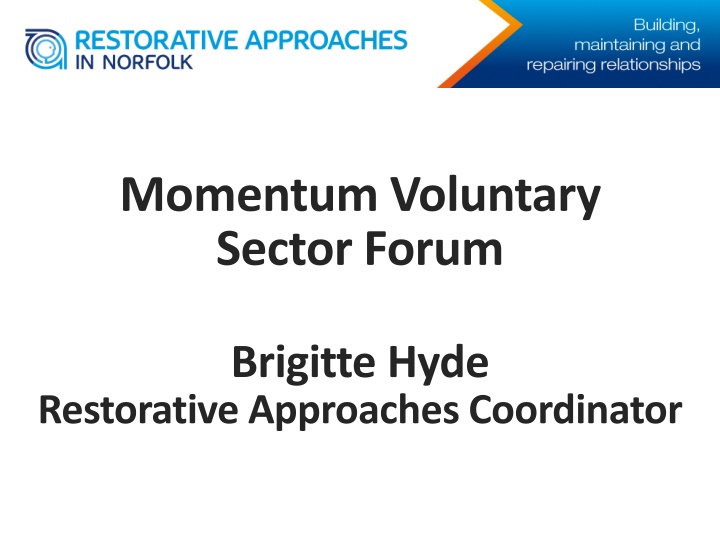
Restorative Approaches and Transformative Impact in Communities
Explore the transformative impact of restorative approaches in building, maintaining, and repairing positive relationships within families, communities, and organizations. Learn how these approaches focus on collaborating with individuals to address harm, involve all parties in finding solutions, and promote understanding and accountability. Discover success stories from schools and communities where restorative practices have led to significant improvements in behavior, engagement, and overall well-being.
Download Presentation

Please find below an Image/Link to download the presentation.
The content on the website is provided AS IS for your information and personal use only. It may not be sold, licensed, or shared on other websites without obtaining consent from the author. If you encounter any issues during the download, it is possible that the publisher has removed the file from their server.
You are allowed to download the files provided on this website for personal or commercial use, subject to the condition that they are used lawfully. All files are the property of their respective owners.
The content on the website is provided AS IS for your information and personal use only. It may not be sold, licensed, or shared on other websites without obtaining consent from the author.
E N D
Presentation Transcript
Momentum Voluntary Sector Forum Brigitte Hyde Restorative Approaches Coordinator
Restorative Approaches provide the foundation to build, maintain and repair relationships positively with families, communities, staff and partners by working with people, as opposed to doing things to or for them
Restorative Approaches RELATIONSHIPS Restorative Justice
So whats different? Traditional What happened? (who did what) Who is to blame? How can we punish those at fault, so they will not do the same thing again? Restorative What happened? (from each person s perspective) Who has been affected or harmed, and what do they need to move on? How can everyone affected be involved in repairing the harm and finding a way forward?
Complaints: Resolutions proposed: Need for mutual respect, consideration and tolerance Trying to reduce speed and noise from mopeds More community circles Having a respect and tolerance zone Adults offering to help young people fundraise for activities in Brundall Noise Bad language Speeding Litter/broken glass in play area and field Damage to property (e.g., bins, shelter) Intimidated by large groups
RA in schools RA in schools Monmouth Comprehensive School, Wales 2014 Monmouth Comprehensive School, Wales 2014 Exclusions down by 93% Attendance at highest ever level over 94% Focus on needs of the students and staff which affected A level and GCES results they were the best ever in 2013-2014 Behaviour control mechanisms no longer used and instead young people are encouraged to develop internal self-regulation Referrals to YOT are down 78% and anti-social behaviour in the town is down by 48% Staff absenteeism due to stress is down by over 60% (saving of over 60,000)
It pays to obsess: Reducing the number of looked after children 1500 Number of children looked after 250 fewer children in care ( 16m saved) 1400 1300 1200 March 11 March 13 March 15 March 14 March 12
RA in residential homes RA in residential homes Norfolk Norfolk Residential Services Project Report, 2010 Residential Services Project Report, 2010- -2012 2012 19% reduction in the number of Police call-outs to NCC Children s Services residential homes since the introduction of RA 20% increase in the amount of calls that have resulted in a crime being recorded, which indicates that when calls are being made, they are more appropriate
RA in HR RA in HR Surrey Surrey County Council, 2017 County Council, 2017 Improved performance Motivation is on the up and formal grievances are down On average 15% of casework is resolved through HR restorative practice
Benefits of working restoratively Benefits of working restoratively Improved relationships Improves communication skills and develops emotional literacy in children and young people Empowers young people to make their own decisions Encourages accountability Equips staff to manage difficult situations Reduction in school exclusions Reduces bullying Reduction in police call-outs to children s residential homes Reduced offending Builds communities
The vison for the Norfolk Restorative Approaches Strategic Board is to secure a county-wide approach within which all partners coordinate, prioritise and maximize their collective efforts to enable people of Norfolk to use non-blaming ways to resolve conflicts and repair harm through the use of restorative approaches to build and maintain effective relationships, prevent potential conflict and create restorative communities. Can you help us?
Norfolk Childrens Services - Restorative Approaches Team Patrycja Salbut-Jezior RA Manager Brigitte Hyde RA Coordinator Telephone: 01603 679125/6 Email: restorativeapproaches@norfolk.gov.uk

